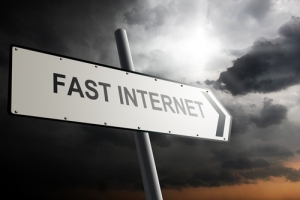 In the State of the Union speech last week, President Obama told his audience, “I intend to protect a free and open Internet, extend its reach to every classroom, and every community, and help folks build the fastest networks, so that the next generation of digital innovators and entrepreneurs have the platform to keep reshaping our world.”
In the State of the Union speech last week, President Obama told his audience, “I intend to protect a free and open Internet, extend its reach to every classroom, and every community, and help folks build the fastest networks, so that the next generation of digital innovators and entrepreneurs have the platform to keep reshaping our world.”
His comments come in the face of potentially paradigm-altering changes in the way our country accesses and uses its most important technology tool. Tom Wheeler, chairman of the Federal Communications Commission (FCC), will distribute a set of rules to FCC commissioners on February 5 that could deliver far-reaching impacts on net neutrality, including reclassifying broadband Internet service as a public utility. This would subject Internet service providers to the same regulations as phone companies, with the aim of shrinking the digital divide and ensuring that everyone has the same access to free content online.
Each year, the FCC is required by the Telecommunications Act of 1996 to release a report that assesses whether or not “advanced telecommunications capability [i.e., broadband or high-speed access] is being deployed to all Americans in a reasonable and timely fashion.” If this is not happening, the act instructs the FCC to “take immediate action to accelerate deployment of such capability by removing barriers to infrastructure investment and by promoting competition in the telecommunications market.”
In its latest report, the FCC found that “broadband is not being deployed to all Americans in a reasonable and timely fashion, especially in rural areas, on Tribal lands, and in U.S. Territories.” According to the FCC, only 1 percent of rural Americans have gained access to broadband at the current minimum speeds of 4Mbps since 2011. Even less have access to speeds of 25Mbps, which is what Wheeler is proposing as the new definition for broadband.
While changing the definition of broadband does not legally require Internet service providers to make changes, it does lower the percentage of Americans who have “broadband,” and results in a sort of public shaming of providers who don’t offer those speeds to their customers.
Not surprisingly, major Internet service providers strongly oppose both reclassifying broadband as a utility and redefining its speed, arguing that it could kill jobs and discourage them from investing in infrastructure. In addition, the National Cable & Telecommunications Association told the FCC that 25Mbps/3Mbps is way too high for the average American broadband user. However, several other industrialized nations offer much higher download speeds at a fraction of the cost. For example, the fastest service offered by Comcast, the largest Internet provider in the United States, is 305Mbps for $320 per month. In comparison, customers in Hong Kong pay their providers only $25 per month to receive 500Mbps.
Despite claims by service providers that higher speeds and regulation are unnecessary and potentially damaging to the industry, quite the opposite is true for education. Without equal access to high-speed Internet, students in schools that lack funding and infrastructure face a barrier to entry in the professional world. Lydia Dobyns, President and CEO of New Tech Network, writes for Huffington Post:
This is especially true for rural communities where students do not have the opportunity to travel far from home or experience diverse cultures. Broadband access allows these students to step outside of the classroom and outside of their community. Without high-speed Internet, these schools have little chance of offering the quality of education their “wired” counterparts enjoy.
Technology is not a “silver bullet,” but it can be a great equalizer. If the FCC does end up reclassifying broadband as a public utility at 25Mbps, then Internet service providers will have more incentives to supply classrooms with affordable, higher-speed Internet access, which can allow students to remote collaborate on projects, form online support groups and communities, videoconference with teachers, or experience realtime video exploration of areas across the globe.
The FCC is set to vote on Wheeler’s proposed rules on February 26. Here’s hoping they recognize the benefit of better Internet access and speeds not only for the country’s consumers, but also—and especially—for its students.
